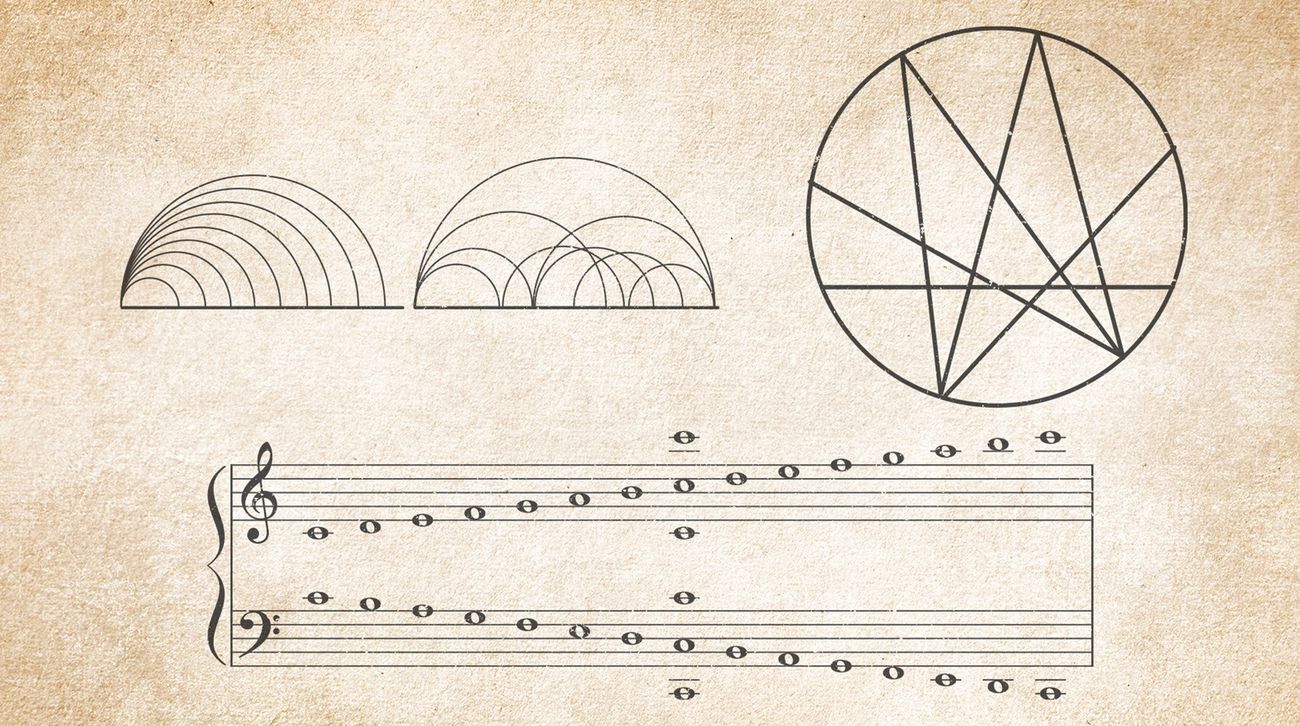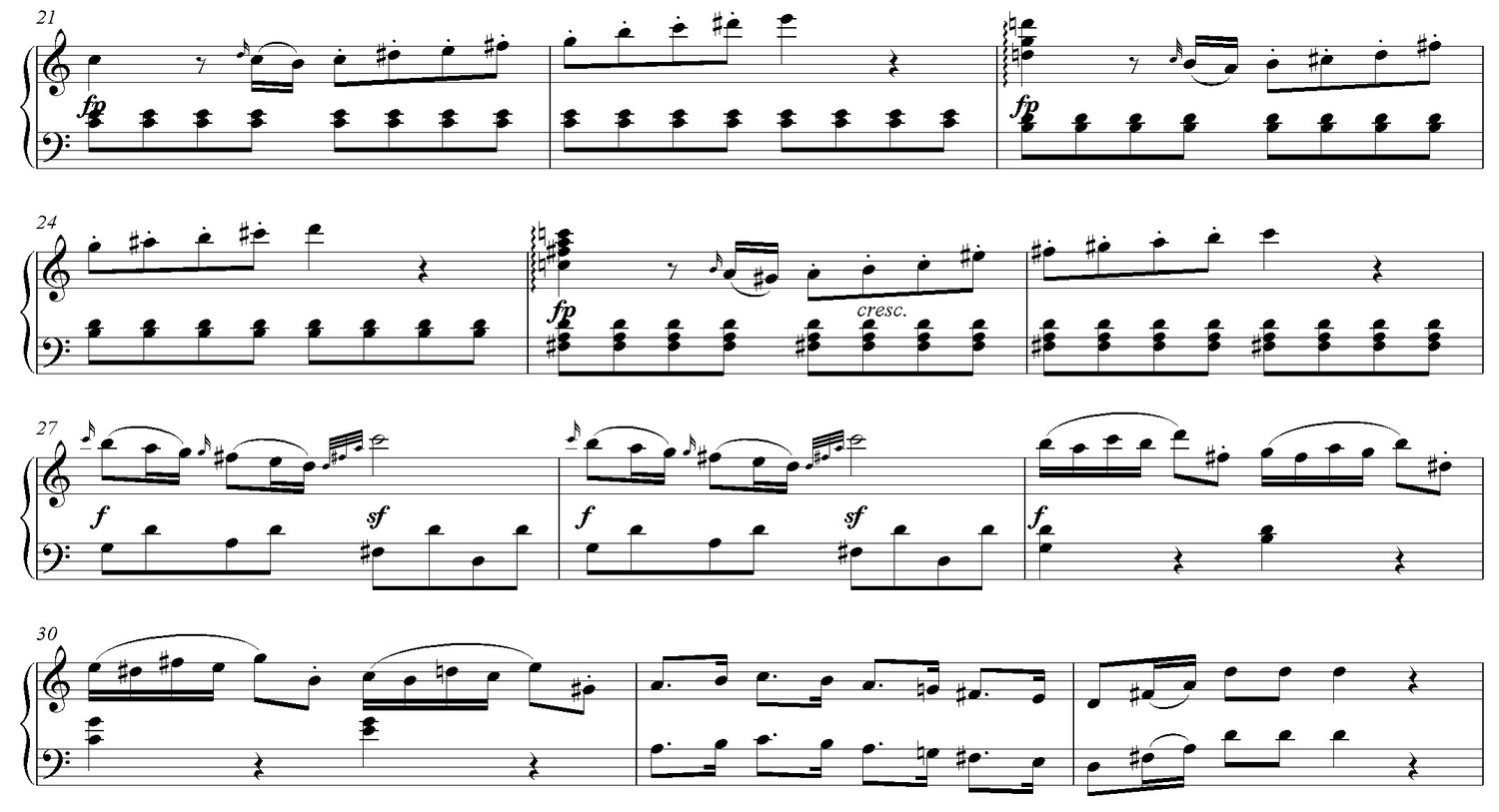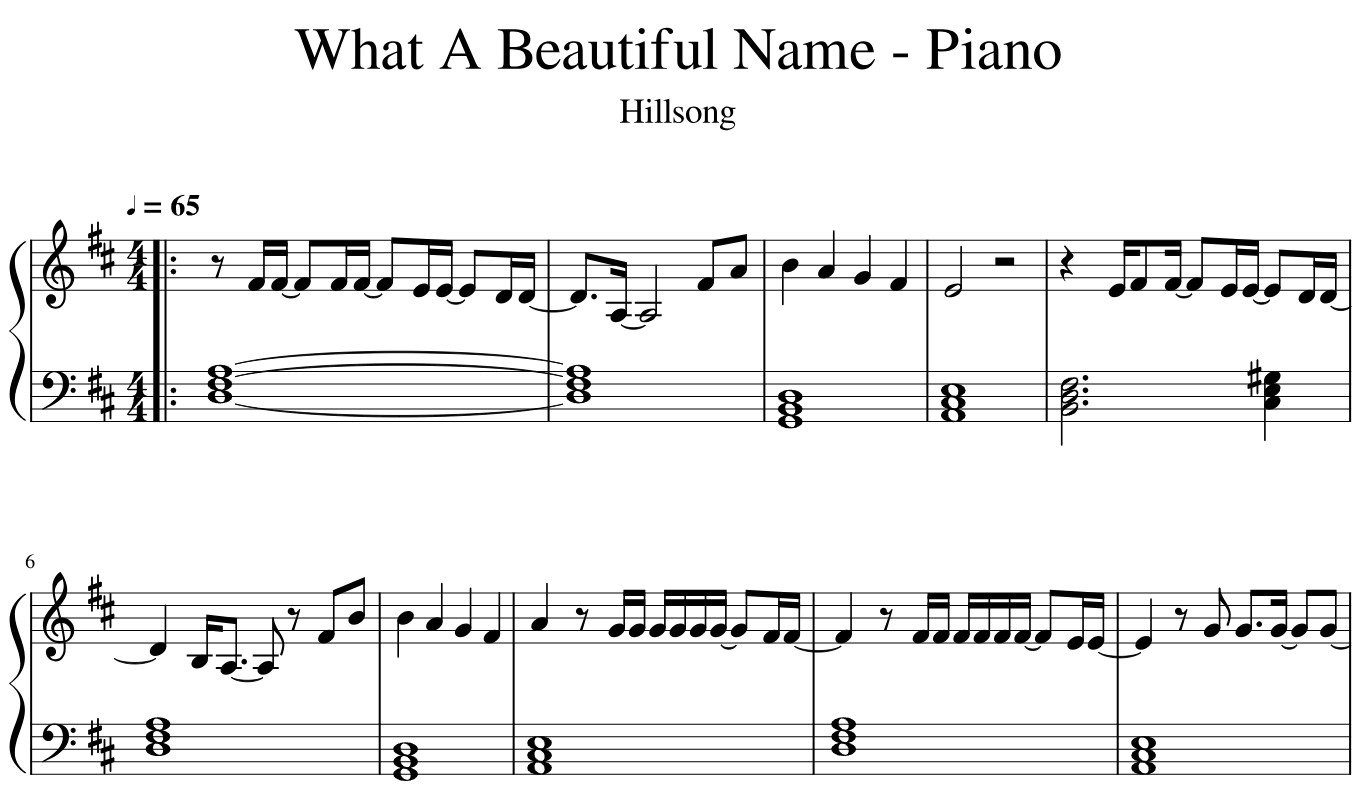Home>Production & Technology>Music Theory>How To Name Chords In Music Theory


Music Theory
How To Name Chords In Music Theory
Published: January 30, 2024
Learn how to name chords in music theory with our comprehensive guide. Understand the fundamental principles of music theory to unlock your creativity.
(Many of the links in this article redirect to a specific reviewed product. Your purchase of these products through affiliate links helps to generate commission for AudioLover.com, at no extra cost. Learn more)
Table of Contents
Introduction
Music theory is the foundation of understanding and creating music. It provides the framework for analyzing, composing, and performing songs. One important aspect of music theory is chord naming and identification. Naming chords correctly not only helps musicians communicate and understand musical compositions more effectively but also adds depth and complexity to their own compositions.
In this article, we will explore the art of naming chords in music theory. We will delve into the different types of chords, discussing major and minor chords, as well as diminished and augmented chords. We will also explore seventh chords, extended chords, and the concepts of inversions and suspensions. By the end of this article, you will have a deeper understanding of how chords are named and be able to apply these concepts to your own musical endeavors.
Whether you are a beginner musician seeking to enhance your music theory knowledge or an experienced musician looking to delve deeper into chord identification, this article will provide you with the necessary guidance and insights.
Basic Overview of Music Theory
Before we dive into chord naming, let’s first establish a basic understanding of music theory. Music theory is a system of principles and rules that govern the structure, composition, and performance of music. It encompasses various concepts such as rhythm, melody, harmony, and form.
One fundamental element of music theory is the musical alphabet. Like the English alphabet, the musical alphabet consists of letters, except in this case, they represent musical notes. The musical alphabet consists of the letters A, B, C, D, E, F, and G. These notes can be modified using accidentals such as sharps (#) and flats (b).
The musical alphabet repeats itself in octaves. An octave is the distance between two notes with the same name, but one having a higher pitch than the other. For example, the note A in one octave is higher in pitch than the note A in the octave below.
Once you have a grasp of the musical alphabet and octaves, you can start building chords. A chord is a group of three or more notes played simultaneously. Chords provide harmony and support to melodies in a musical composition.
Understanding the concept of intervals is crucial in music theory. In simple terms, an interval is the distance between two notes. Intervals determine the quality and character of a chord. For example, the interval between the notes C and E is called a major third, while the interval between C and Eb is called a minor third.
Now that we have covered the basics of music theory, let’s explore the intricate world of chord naming and identification.
Understanding Chords
Chords are fundamental building blocks of music and play a vital role in creating harmony. Understanding chords is essential for musicians of all levels to be able to analyze, compose, and perform music effectively.
A chord is created by playing three or more notes simultaneously. These notes are typically played in intervals or specific patterns that create a harmonious blend of sound. The root note of a chord is the note from which the chord is built, and the other notes in the chord are referred to as the “chord tones.”
Chords provide a sense of stability and create a foundation for melodies in a musical composition. They can evoke different emotions and add richness and complexity to a piece of music.
There are various types of chords, each with its unique sound and function. The most basic chords are major and minor chords. Major chords have a bright, happy, and uplifting sound, while minor chords have a more melancholic, introspective, or sad tone.
In addition to major and minor chords, there are also diminished and augmented chords. Diminished chords have a tense and dissonant sound, often creating a sense of unease or suspense. Augmented chords, on the other hand, have a bright and tense sound and are often used to add tension or create a sense of anticipation in music.
By understanding and utilizing different types of chords, musicians can create a wide range of emotions in their compositions and add depth and complexity to their musical arrangements.
In the next section, we will delve deeper into the process of naming chords in music theory.
Naming Chords in Music Theory
Naming chords in music theory follows a specific system, allowing musicians to communicate and understand chord structures with ease. The name of a chord is derived from its root note, quality, and any additional extensions or alterations.
The root note of a chord is the note from which the chord is built. It serves as the foundation and provides the chord its tonal center. For example, a chord with the root note of C will be referred to as a “C chord.”
The quality of a chord refers to whether it is major, minor, diminished, or augmented. This quality is determined by the intervals and relationship between the chord’s notes. Major chords have a root note, a major third (four semitones above the root), and a perfect fifth (seven semitones above the root). Minor chords, on the other hand, have a root note, a minor third (three semitones above the root), and a perfect fifth. Diminished chords consist of a root note, a minor third, and a diminished fifth (six semitones above the root), while augmented chords have a root note, a major third, and an augmented fifth (eight semitones above the root).
In addition to the root note and quality, chords can also have extensions or alterations. Extensions are additional notes beyond the basic triad of the chord. Common extensions include the seventh (adding a note a minor seventh above the root), ninth (adding a note a major ninth above the root), eleventh (adding a note a perfect eleventh above the root), and thirteenth (adding a note a major thirteenth above the root).
Alterations, on the other hand, modify the basic intervals of the chord. They can involve raising or lowering certain notes within the chord. Common alterations include sharping or flating the fifth or ninth of a chord.
By combining the root note, quality, and any extensions or alterations, musicians can accurately name and describe a chord, facilitating effective communication and understanding.
In the following sections, we will explore specific types of chords and their naming conventions, providing you with a comprehensive understanding of chord structures in music theory.
Major and Minor Chords
Major and minor chords are the most basic and commonly used chords in music. They form the foundation of countless songs across various genres and evoke different emotions and moods.
A major chord is built using a root note, a major third interval (four semitones above the root), and a perfect fifth interval (seven semitones above the root). For example, a C major chord consists of the notes C, E, and G. Major chords have a bright, happy, and triumphant sound, often conveying a sense of positivity and excitement.
On the other hand, a minor chord is constructed using a root note, a minor third interval (three semitones above the root), and a perfect fifth interval. For instance, a C minor chord is made up of the notes C, Eb, and G. Minor chords tend to have a more melancholic, introspective, or sad tone, evoking feelings of sorrow or longing.
Throughout music history, major and minor chords have been used to convey contrasting emotions. Major chords often represent joy, celebration, and optimism, while minor chords can express sadness, introspection, or a more complex range of emotions.
Understanding and recognizing major and minor chords is essential for musicians when analyzing and playing music. By identifying the root note and intervals within a chord progression, musicians can easily determine whether the chords being played are major or minor.
When naming major and minor chords, the convention is to use the uppercase letter of the root note for major chords and the lowercase letter for minor chords. For example, a G major chord would be written as “G” and a G minor chord as “g”. This naming convention helps musicians quickly identify and communicate the quality of a chord.
Whether you are playing a joyful, upbeat melody or a heartfelt, melancholic ballad, major and minor chords are indispensable tools in creating emotion and setting the tone for your musical compositions.
Diminished and Augmented Chords
Diminished and augmented chords add a unique flavor and tonal color to music. These chords create tension, intrigue, and a sense of unease, allowing musicians to evoke specific emotions and create interesting harmonic progressions.
A diminished chord is formed by combining a root note, a minor third interval (three semitones above the root), and a diminished fifth interval (six semitones above the root). For example, a C diminished chord consists of the notes C, Eb, and Gb. Diminished chords have a dissonant and unresolved sound, often associated with mystery, suspense, or darkness in music.
On the other hand, an augmented chord is created by combining a root note, a major third interval (four semitones above the root), and an augmented fifth interval (eight semitones above the root). For instance, a C augmented chord consists of the notes C, E, and G#. Augmented chords have a bright and tense sound, often used to create a sense of anticipation or to add tension before resolving to another chord.
Diminished and augmented chords can be used in a variety of musical contexts. They are particularly useful for transitioning between different chords or creating chromatic harmonies. In jazz and contemporary music, these chords are often employed for their unique sound and ability to enhance harmonic complexity.
When naming diminished and augmented chords, the convention is to use a lowercase letter followed by the symbol “o” for diminished chords and “#” for augmented chords. For example, a C diminished chord would be written as “C°” and a C augmented chord as “C#”. This naming convention helps identify and distinguish these specific chord qualities.
By incorporating diminished and augmented chords into your musical compositions, you can add tension, intrigue, and unexpected harmonies that captivate the listener’s ear.
Seventh Chords
Seventh chords are a common and versatile type of chord that adds richness and complexity to musical compositions. These chords consist of four different notes and are frequently used in jazz, blues, and other genres to create a sophisticated and expressive harmonic sound.
A seventh chord is built by combining a root note, a major third interval (four semitones above the root), a perfect fifth interval, and a minor seventh interval (ten semitones above the root). For example, a C dominant seventh chord consists of the notes C, E, G, and Bb. The addition of the minor seventh interval gives the chord its distinct character.
Seventh chords can be classified into different types based on their qualities and functions. The most common types include:
- Major Seventh (Maj7): This type of seventh chord has a major third, perfect fifth, and major seventh interval. It has a smooth and dreamy sound, often associated with beauty and introspection.
- Dominant Seventh (7): The dominant seventh chord is built on the fifth degree (or dominant) of a major scale. It has a major third, perfect fifth, and minor seventh interval. Dominant seventh chords have a strong and tension-filled sound, typically used to create a sense of resolution or to lead to the tonic chord.
- Minor Seventh (m7): This chord consists of a minor third, perfect fifth, and minor seventh interval. It has a mellow and melancholic sound, commonly found in jazz and blues music.
- Half-Diminished (m7b5): The half-diminished chord combines a minor third, diminished fifth, and minor seventh interval. It has a tense and introspective quality, often used for its unique dissonance.
Seventh chords offer a wide range of harmonic possibilities and can be used to create complex and interesting progressions. They add depth, tension, and a sense of movement to musical compositions, allowing for more expressive and dynamic musical storytelling.
When naming seventh chords, the convention is to use uppercase Roman numerals for major seventh chords (Maj7), a number followed by a lowercase “7” for dominant seventh chords (7), lowercase Roman numerals for minor seventh chords (m7), and lowercase Roman numerals with a small circle for half-diminished chords (m7b5).
By incorporating seventh chords into your musical vocabulary, you can expand your harmonic palette and create music that is rich in texture, emotion, and sophistication.
Extended Chords
Extended chords are chords that go beyond the basic triad or four-note seventh chord, incorporating additional notes to create a richer and more complex harmonic sound. These chords add color, depth, and tension to musical compositions, expanding the possibilities for chord progressions and melodic harmony.
Commonly used extended chords include ninth chords (9), eleventh chords (11), and thirteenth chords (13). These chords build upon the foundation of the seventh chord by adding notes at intervals of a ninth, eleventh, or thirteenth above the root.
A ninth chord is created by including the ninth degree (or second degree, an octave higher) in addition to the root, third, fifth, and seventh of the chord. For example, a C9 chord consists of the notes C, E, G, Bb, and D.
An eleventh chord incorporates the ninth and eleventh intervals in addition to the root, third, fifth, and seventh. For instance, a C11 chord includes the notes C, E, G, Bb, D, and F.
A thirteenth chord extends even further by incorporating the ninth, eleventh, and thirteenth intervals along with the root, third, fifth, and seventh of the chord. A C13 chord is comprised of the notes C, E, G, Bb, D, F, and A.
Extended chords are commonly used in jazz, fusion, and other genres where complex harmonies and improvisation play a significant role. These chords provide musicians with a wider range of tonal possibilities and allow for more intricate and vibrant harmonies in their compositions.
When naming extended chords, the basic chord symbol is followed by the number of the added interval. For example, a C9 chord is written as “C9,” a C11 chord as “C11,” and a C13 chord as “C13.”
By incorporating extended chords into your musical repertoire, you can explore new harmonic textures and create music that is rich, dynamic, and filled with expressive possibilities.
Inversions and Suspensions
Inversions and suspensions are important concepts in chord voicing and harmonic progression, providing musicians with additional tools to create interesting and compelling musical arrangements.
Inversions refer to the rearrangement of the notes within a chord, so that a note other than the root becomes the lowest pitch. By inverting the chord, the harmony takes on a different character and can create smoother voice-leading and bass movement.
There are three types of chord inversions: root position, first inversion, and second inversion. In root position, the root note of the chord is the lowest note. In first inversion, the third of the chord is the lowest note, while in second inversion, the fifth of the chord is the lowest note. Inverting a chord can add a sense of movement and variation to chord progressions, allowing for smoother voice-leading and creating a more interesting and dynamic harmonic structure.
Suspensions, on the other hand, involve temporarily sustaining or suspending a note from a previous chord, creating tension before resolving it to a note within the next chord. This technique adds a sense of anticipation and drama to the music.
One common type of suspension is the “sus4” suspension, where the fourth of the chord is sustained while the rest of the chord changes. This creates a suspended, unresolved sound that yearns for resolution. For example, a Csus4 chord includes the notes C, F, and G, where F is the suspended note that resolves back to the third of the chord, E.
Another suspension is the “sus2” suspension, where the second of the chord is sustained. This suspension adds a unique and ethereal quality to the music. For example, a Csus2 chord includes the notes C, D, and G, with the second, D, creating tension before resolving back to the root note, C.
Inversions and suspensions can be used in various musical contexts to create tension and release, add variation to chord progressions, and craft intricate harmonies. They offer opportunities for musicians to showcase their creativity and enhance the overall musical experience.
Conclusion
Understanding chord naming in music theory is essential for musicians looking to deepen their understanding of harmony, analyze compositions, and create their own musical arrangements. By familiarizing yourself with the different types of chords and their structures, you can effectively communicate and express your musical ideas.
In this article, we explored the basics of music theory, including the musical alphabet, intervals, and the construction of chords. We learned about major and minor chords, which form the foundation of Western music, and discovered how diminished and augmented chords can add tension and color to compositions. Additionally, we discussed the significance of seventh chords and their expanded harmonies in jazz and other genres. Finally, we explored inversions and suspensions, which provide musicians with creative options for chord voicing and harmonic progression.
By incorporating these concepts into your musical vocabulary, you can expand your theoretical knowledge and bring greater depth and complexity to your compositions and performances.
Remember, music theory is not rigid; it is a language that allows for creativity and interpretation. Experiment with chord progressions, explore different voicings, and embrace your own musical expression. The more you delve into chord naming and understanding, the more you will unlock the potential to create beautiful and captivating music.
Whether you are a beginner musician embarking on your musical journey or an experienced composer seeking to expand your harmonic palette, the knowledge and application of chord naming in music theory will undoubtedly enhance your musical abilities and broaden your artistic horizons.











